Whanganui Canoe Trip
From the 10th until the 14th of September, we were in National Park village in Tongariro National Park. It rained daily, and our plans to take walks around the park and the mountains were on hold or delayed. We had previously decided to do the final “Great Walk” of our trip, which was a 3-day canoe down the Whanganui river. Both Fem and I have no experience in canoes and were concerned that the previous days of rain would affect the river levels.
Day 1 – The Canoe Trip
On the 14th, there was a break in the rain for about three days according to weather forecasts, so we thought it would be now or never. We travelled to a canoeing company and set off to the insertion point, which was a hut named Whakahoro. Fem constantly mentioned to the owner that we had no experience and that he was to let us know if the river was safe to travel down. We would respect his decision either way. He assured us that he had 18 years of experience on the river, and he would make the final call if we were to go or not.
When we got to Whakahoro, he checked out the river and said we were ok to go. He did mention that the current was flowing faster than normal, but this would assist us going down and would take our 6-hour travelling time down to 4 hours. I was pleased that I would mainly only have to steer and not worry too much about paddling. He said that if we did tip out, to just get the canoe to shallow water, tip the water out and then open one of the barrels to change into warm, dry clothes. Since we only had one set of warm clothes, I was unsure if I would do that last part if it came to it! He also mentioned that our centre of gravity would be much higher as we were both a lot taller. Therefore we just needed to be careful when balancing the canoe.
We stored our possessions in six 30L watertight barrels. Three blue barrels I had my things in and three black ones that housed Fem’s gear. The owner tied the barrels in a two-by-three pattern with a blue rope across the 2 person Canadian canoe. He also put in a ten-metre black rope that we could use with one end tied to the front of the canoe. We had our two 3L Camelbacks, which held our water supply. Fem put hers in the bottom of the canoe. I tied mine to a canoe cross beam (shown in the photo below). We didn’t have wet suits, so I wore my swimming trunks with a regular pair of shorts over the top for warmth. I had two T-shirts and my raincoat on my torso. Fem was similar but with long quick-drying pants and thermal pants. We both had our Teva sandals on our feet.
The owner and his assistant helped us into the canoes, and away we went. The sides sunk slightly lower than expected, with both of us in the canoe. While I felt pretty ok, Fem was instantly concerned with how unstable it seemed.
For the first hour, things were well. Our progress was good, and we thought we had reasonable control of the canoe. I sensed my legs were getting tired from keeping the back end balanced. Fem had to shout out to me about the direction she wanted to travel. She was sitting in front of me, and with my hearing aids out, she was hard to hear. We saw plenty of wild goats on the sides, and the scenery was good. The water was very murky, and you could not see through it. Our speed was good, and I reckon it would have been about jogging speed.
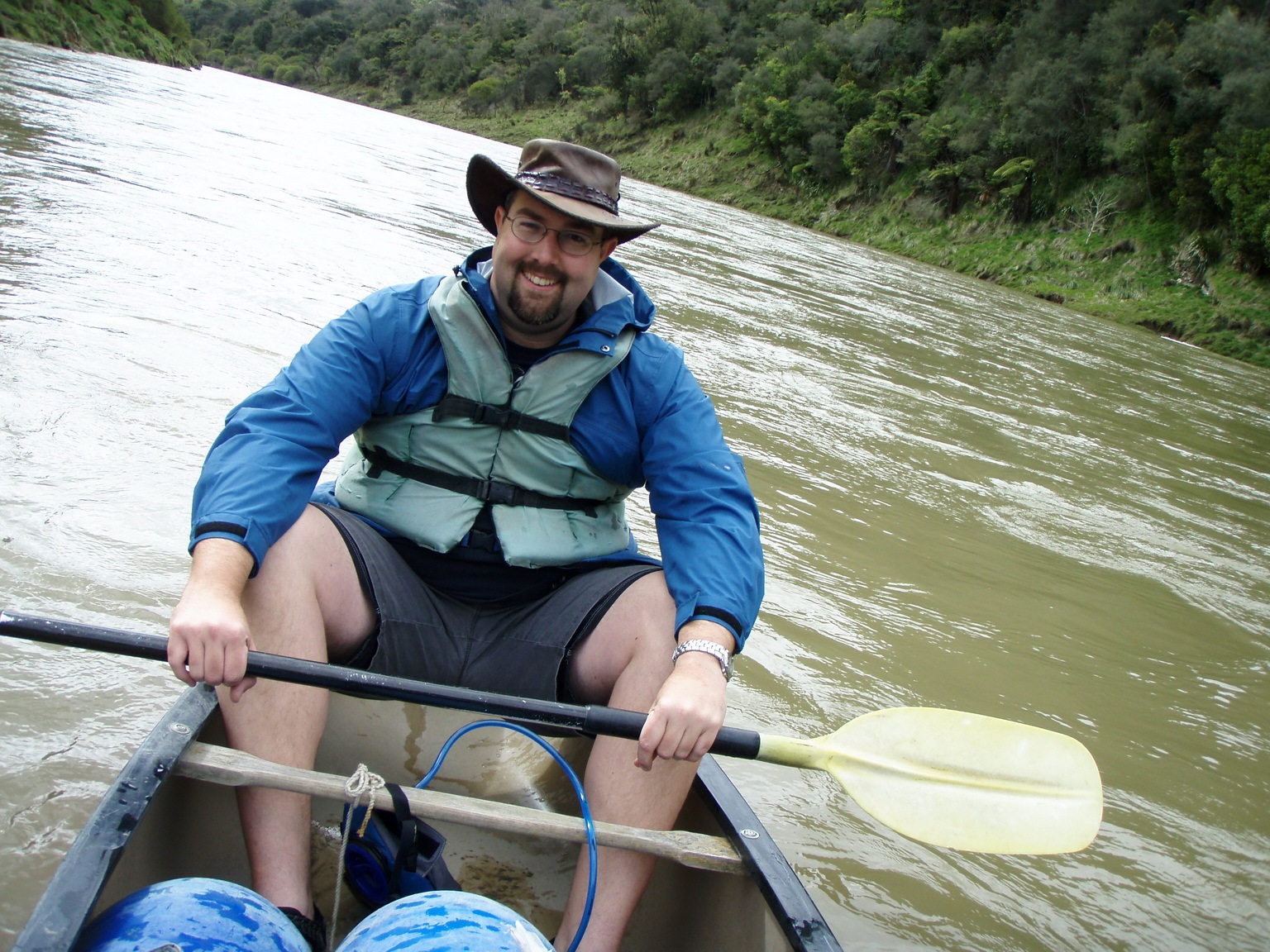
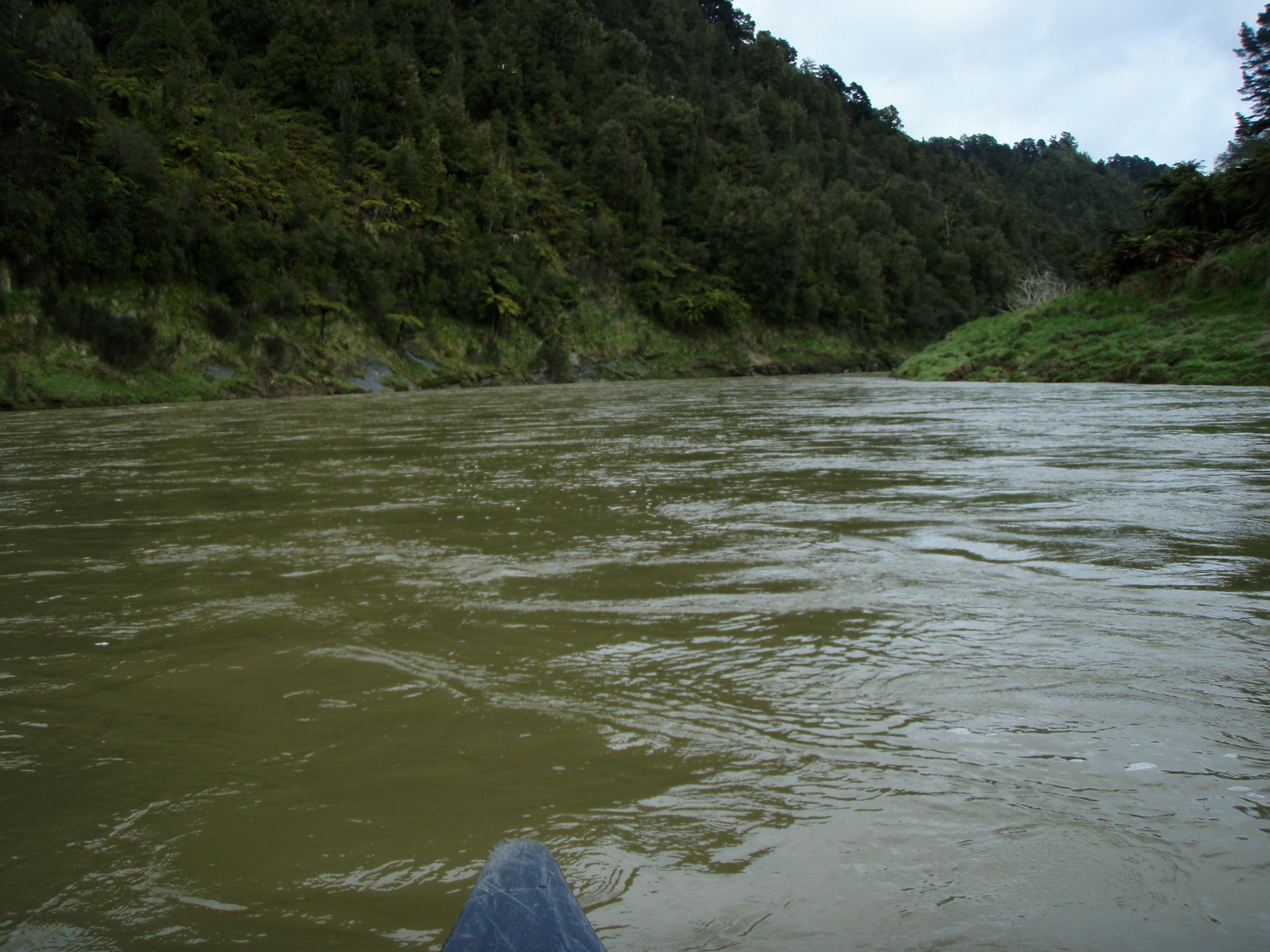
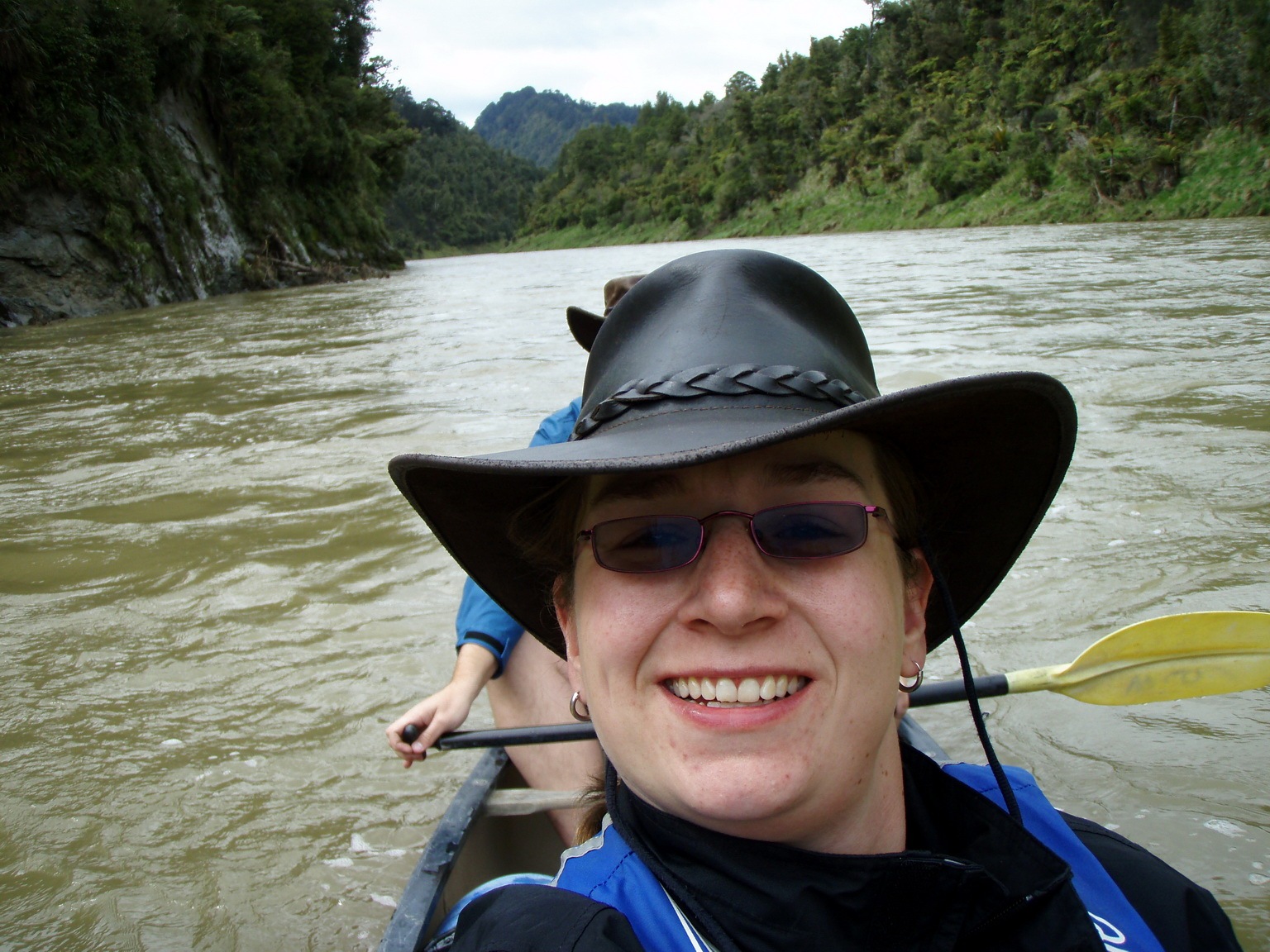
We passed the first campsite named Mangapapa. Then just over 1 hour into the trip, we came around a bend in the river. There did appear to be two river currents merging. We came across one and turned to line up with the other one but came in at an awkward angle. This angle caused the canoe to rock from side to side. Despite us both desperately trying to keep it level and the rocking under control, the canoe tipped over.
The first thing that got me was how cold the water was. My lungs seemed to collapse in shock. My breath came out in short, sudden gasps, plus with the shock of us having overturned. I looked across to Fem to see she was experiencing the same thing. Neither of us could touch the bottom, so we could only move around the upturned canoe and try to manoeuvre it down the river.
I tried to make light of the situation. “Ah well, we went over. Let’s get this back up and get going!”.
One thing I saw once I got over the shock was Fem’s camelback floating away down the river. I was not too concerned with it as we had more important things to worry about.
Remembering the advice the owners told us, we tried to get the overturned canoe to the river bank. However, the current was too strong. Each time we kicked ourselves over while dragging the canoe and got close to shore, the current would pull us back into the river. Judging by our speed relative to the shoreline, I estimated the current was still about the speed of an average person jogging. It was definitely faster than walking speed.
After trying this about four times, I was getting a bit concerned. A lot of the shoreline on both sides of the river was just steep cliffs with no possibility of putting the canoe on land. Other landing sites were on the other side of the river or being passed by too fast for us to access. I was always pleased with the “powerful” kick I could do in the swimming pool, but this current was just way too strong. Dragging an upturned canoe was like a dead weight in the water. We just could not get it to land or even just shallow water.
After discussing it with Fem, we thought we should try to tip over the canoe in the water and get back into it. But when you cannot touch the bottom, as the canoe is flipped, it scoops up a lot of water as it turns over, which sends either the head or the tail of the canoe under the surface of the water.
Around this time, the ropes holding the barrels somehow came undone. Three of the barrels started floating away from us. Fem was able to grab one and hang on to it. Fem yelled out for me to get the barrels. I could not get to the other two barrels in time, and they floated out of reach.
“Man… what next….” I thought.
Fem also was getting her legs tangled up in the big long black rope. It’s unnerving to feel this rope wrap around your legs in murky water you cannot see.
Fem also became separated from the canoe briefly. She had to let go of the barrel to be able to swim to the canoe. She yelled out, and I moved around to the back of the upturned canoe, and with her extending out her oar, I could grab it and pull her close to the canoe again. We needed at least one hand on the canoe to stay connected with it the whole time.
We tried to turn over the canoe again and again. But each time, it just scooped up too much water, and we could not do anything with it except roll it back over again.
At about this time, the barrels that had floated away came back to us. I grabbed onto them and asked Fem for some rope. She was able to get the black rope and began to find the end of it slowly. The cold water was making our hands and fingers numb. It was getting difficult to do detailed tasks with our fingers. Her camelback was also floating nearby as she was finding the end of the rope. I quickly grabbed it and clipped it onto one of the handles of a nearby barrel. After Fem found the end of the very long rope, she gave it to me, and I tied the barrels to it. We had all our equipment again. Things were starting to look up.
We then got stuck in a small shallow whirlpool, which meant we were moving slower but going around in a big lazy circle. We tried to take advantage of the slower speed to get to the shoreline again, but at this spot, there were mainly steep cliffs, and the current just pulled us away again when we thought we had almost gotten there. After going around twice, we realised where we might get stuck, so we were able to kick free into the primary current, which then pushed us down the river again.
The cold of the water was starting to get to us. Both of our bodies were numb. The only thing keeping us warm was our constant efforts to get the canoe either to move to the shoreline or turned over.
I got the idea of putting the barrels under the upturned canoe and then trying to flip the whole thing over. Since the barrels were buoyant, these should push up the canoe as it turns, and thus it should scope up less water.
We tried this about 2 or 3 times and then finally success! We were able to turn the canoe over, and while it was mostly full of water, it did not sink.
I got my legs tangled in that damn black rope and had to kick and untangle myself free. This frequently happened to Fem and a few times to me.
With me on one side and Fem on the other to keep it balanced, I then started to empty out the water using a 2-litre milk bottle with the end cut off. We did have 2 of them, but only one was tied to the canoe. We lost the second one the moment we turned over and never saw it again.
Hanging onto the side of the canoe, it was a painfully slow process of emptying out the water 1 litre at a time. My arms were getting a little sore, but they were also very numb from the cold, so I just kept going.
During this process, at an early stage, I was able to touch the bottom. I could feel lots of loose medium-sized pebbles. We would have been about waist deep in the middle of the river. We tried to stand up while holding on to the back of the canoe. We found ourselves getting dragged over the pebbles by the bottoms of my feet. I recall thinking, “Wow. these Tevas are awesome!”. We were able to slow our speed, but at the same time, we were creating a huge wake by our presence. I felt the water from the current rushing past us, was surprised at how loud the roar was and realised this was not going to work. So we gave up and continued down the river.
It was around this time we passed the signs indicating the second camp spot named Ohauora. We were surprised to see practically no landing bay at Ohauora. It made it very, very easy to miss it and drift on past. If you were in a canoe, it would have been impossible to back-paddle to make it back. Ohauora was the halfway mark of our trip. I knew we needed to get back into our canoe before we risked sailing past our hut, which was next.
After about 20 minutes of emptying the canoe, it was high in the river, with the two of us clinging to the sides as we still continued down the swollen river. I yelled out to Fem to get into the canoe. She was losing her strength fast and had trouble pulling herself in. With both of us unable to touch the bottom, it was tough to get in. She asked me to get in first. With great difficulty, I pulled myself up and was successfully able to get in the canoe. Ahh, it was so great to get out of the water! My body started to warm up straight away as there was still a bit of sunlight left.
However, with me in the back of the canoe, this raised up the front of the canoe even more. Fem asks me to try and paddle over to the side for a hopefully shallow spot to make it easier for her to get in. I was not able to control the canoe very well with her in the water and holding on to the side.
I urged Fem again to try and get into the canoe. With me holding the other side for stability, Fem tried and tried to get in. Unfortunately, the efforts destabilised the canoe too much, and it toppled over again.
The cold water rushed over me again as I fell in, and it seemed even colder now. Fem was starting to shiver in the water. I could see her lower lip trembling with a combination of fear and the cold water. I was very cold too and was shivering a bit. I was quiet for a while, not really sure what to make of it all.
“What are we going to do, Matt?”
“I dunno. I am thinking….”
I was fast running out of ideas. I knew we had to get out of the water fast. I didn’t know how long we had been in there. We tried to turn over the canoe using the barrels under it repeatedly, and it just didn’t work like before. I checked the barrels and noticed one of the blue ones had sprung a significant leak. It was no longer buoyant; since it was heavy and barely above the surface, it hindered the turnover process. I knew it was one of my barrels, but I untied that barrel and set it loose with almost no hesitation.
“Jeez, I really bloody hope that’s not the one with my hearing aids and camera and wallet….” I thought to myself as it sailed away, barely visible.
With the dead weight no longer there, we were having more success. But I was still not able to get the canoe over successfully.
Fem was getting colder and colder. I was feeling numb and was shivering as well. She started to yawn, and I was concerned if it was a sign of early hypothermia.
Fem said, “Matt, I am not sure how much longer I can hold on.”
I replied, “Fem, just hold on for a bit longer….”
With all the attempts to overturn the canoe, the long black rope had wrapped itself around the canoe. The rope is a jumbled mess with all the barrels on the other side.
In sheer frustration, I grab the ropes and pull with all my might with both my feet on the side of the canoe. Fem sees this and pushes up from her side as well. The canoe flips over again, more quickly this time, and luckily, it’s not entirely awash with water.
“Finally!” I yell out as I frantically start to empty the canoe with the milk carton.
While I am emptying the canoe, Fem notices a possible spot where we can get to shore. The current has taken us close to the left side of the river, so it’s a good shot. With the canoe the right way up and most water out of it, it’s no longer the dead weight it was in the water. We can shimmy over to the left, and I reach out and grasp long blades of grass and clumps of dirt on the cliff’s edge. Fem does the same, and we are able to stop the canoe just out of the main current.
I look up to where we are, and it’s just a very steep grassy hill that has gone straight into the water. There was a small flat section of mud, dirt and grass sticking out about 50 cm wide by about 3 metres long. It would have been enough to get the canoe off the water. But we still needed to get ourselves out of the water.
I repeatedly tried to get out, but the grassy walls near the water were too steep. Every time I get a footing and put weight on it to launch myself up, it collapses under me. After lots of failed attempts and looking for rocky parts, I still was not having luck. Fem was urging me on, and I tried again and again until my lower legs were all scratched and red from slipping. Fem tells me to hold the canoe, and she tries to get out. She somehow manages to get out and up a steep embankment. She is out of the water! With her holding on to the canoe’s rope, I can let go of the canoe and use both hands to try and get a hold.
I finally can get a hold and am able to pull myself out with mud everywhere! We then drag the canoe up the small section. So we are finally both out of the water, and the canoe is on land!
The canoe is still on an angle, and the water inside it rushes down to the back. With Fem holding the rope to ensure the canoe did not slide back into the water, I removed the rest of the water, and Fem helped untangle the mess of the ropes. This took some time, but we ended up having just the blue rope tying the five remaining barrels to the canoe with plenty of grannie knots to ensure it did not come loose quickly. The long black rope was also tied to itself to ensure it did not get in the way again.
Very carefully, we got back into the canoe. We were both wet and still prone to shivering in the cold wind. We were able to launch successfully, and we then paddled very carefully down the river.
Every turn we did was very slow and deliberate. There was one bit when the canoe started to rock from side to side again. I yelled out, “STABILISE IT!!!” and we both clung to the sides, and it stabilised without tipping over. We both breathed a long sigh of relief then.
Literally, about 20 minutes later, we came to the sign for the hut. “John Coull Hut is 250 metres downstream on the right”.
“Jesus, are we almost there already?”
We moved over the right side and hugged the shoreline carefully. We were looking for the landing bay, and we were NOT going to miss it.
We saw a sign saying “Welcome to John Coull Hut”, but there was no landing zone. There was just a steep grassy hill, but not as bad as before when we got the canoe out. We manoeuvred the canoe to the side and out of the main current. Fem carefully gets out of the canoe, climbs up the hill, and sees a path. I urge her to follow it and see where the landing zone is. She follows it and sees that it is just around the corner. So rather than get back into the canoe, we just walked along the steep shoreline dragging the canoe by the rope on the front. I was shocked when I saw the landing zone. If you did not know it was there, you WOULD have missed it. There was a strong current right in front of it, only about 10 metres wide. It was also directly behind a steep turn. The shore was a small section of dirt and mud at an angle of 45 degrees. I took the rope connected to the canoe and dragged it over. I got another shock when I stepped on the dirt near the water’s edge and sunk down almost to my knee.
We were not going to be able to drag the canoe up the steep slope without getting the barrels out first to lighten the weight. Fem untied them and passed them up to me. Then we were able to get the canoe up higher, and we then tied off both ends to nearby trees and stumps.
We were safe! We took the 5 barrels up to the 100-metre path to the hut. This process took ages as we were both exhausted.
Later on, based on the timestamp of photos we took, we estimated we would have been in the water for 3.5 hours.
In hindsight, I was seriously worried about what would have happened if I didn’t get the canoe over the last time and Fem was not successful in getting us to land. There would have been a good chance we would have gone right past the hut, and given how cold we both were, I don’t think we could have held on to the canoe much longer.
The photos below show Fem and me just when we arrived at the hut. The middle image is our landing zone at the John Coull hut.

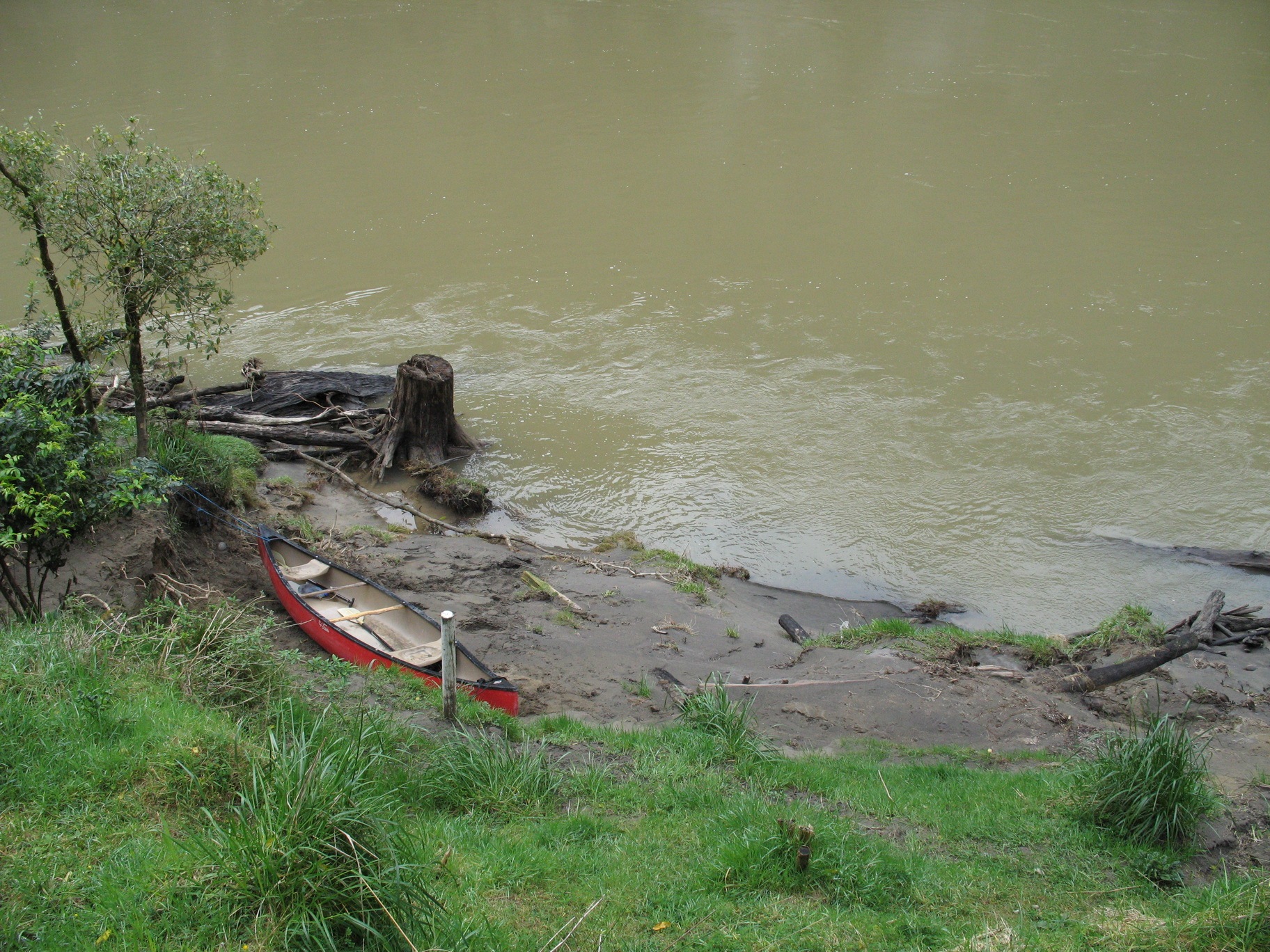
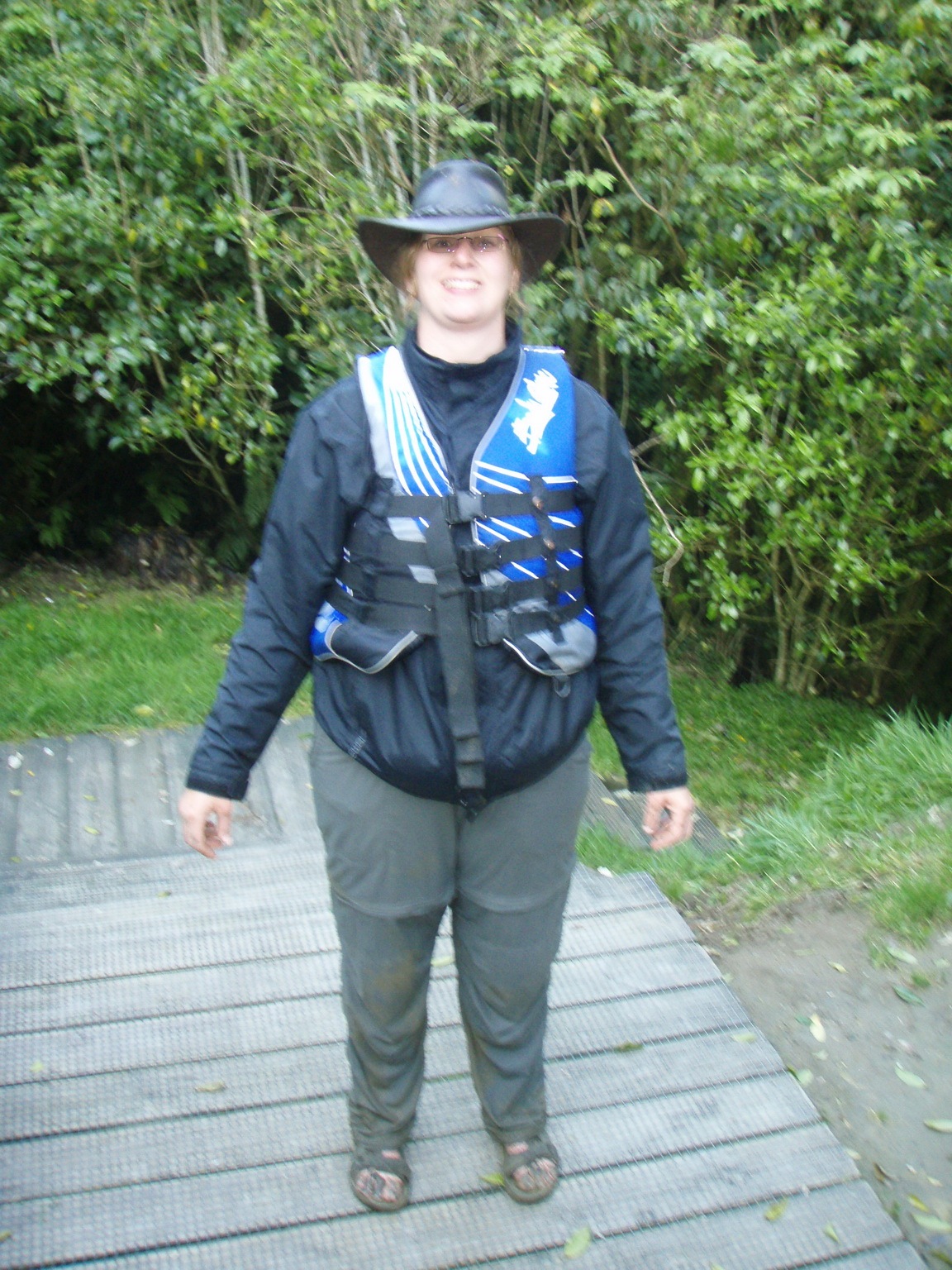
We were the only ones at the hut. We opened the barrels, and to our shock, 3 of the 5 barrels had water leakage. The barrel that I had cut loose contained my sleeping bag. At this point, I didn’t care too much about the lost bag. I was glad we were out of the water and at the hut. If I had a choice of which barrel to “sacrifice”, that would have been it. The two barrels that had remained dry contained our shoes, the food, my hearing aids, camera, wallet and matches. I was so happy my hearing aids were ok!
Almost all of Fem’s dry clothes were saturated. Her sleeping bag was damp and wet in spots. My clothes were damp or had minor wet sections, and the utility bag was wet. Fem’s headlight torch was damaged and didn’t work.
The wood fire in the hut did not have any matches provided. Luckily the ones we had were in one of the dry barrels, so we used them to try and start a fire. After a frustrating hour of attempts, we could not get the damp wood to keep burning. We then gave up and had dinner.
With most of Fem’s clothes wet, we had to share what little dry clothes we had between us. I ended up with just two T-shirts and a pair of underpants and Fem was the same. After being in the water for that long, we needed to get warm.
We used the yellow plastic bag liners for our clothes as makeshift sleeping bags and had just Fem’s damp sleeping bag over our bodies. Anything to try and warm ourselves. We have an early night and try to get to sleep. I can’t stop shivering as I just cannot get warm. My exposed legs are cold to touch and shaking uncontrollably. Even with a second hut mattress over me to try and keep the warmth in, it does not help much.
After a while, Fem has had enough of this and tries to start the fire again while I try to get warm. After another hour, she is successful, and the fire is going! We then move our hut mattresses out in front of the fire and spend a few hours slowly getting warmer. My legs finally get warm, and I stop shivering.
We no longer want to go further with this canoe trip. We cannot risk another spill in the water with the strong current. Our confidence in the watertight barrels is gone. So we decide to stay at the hut until we are rescued.
Day 2 – The Waiting
We wake up and the fire has gone out. Another hour is spent by myself at first, and then Fem persists with it and gets it back up. We resolve not to let it die out again as we are running out of matches.
Fem has a sleep mid-afternoon while I read some of the magazines that were left in the hut. Shortly after, two pig hunters enter the hut. They seem surprised to see us. We share our story of the previous day to their shock and amazement. They came to the hut via their jet boat but had to pick up other people, so they could not take us back with them. But they assured us they would give the message to our canoe company so we should be picked up the following day sometime. This is very reassuring to know.
About two hours later, three Israeli Russians enter the hut. Michael, Kesnia and Boris. They kayaked our first leg of the river that day. Again they were shocked to hear of our story. They were experienced sea-kayakers, and on the day we set off, they had been denied entry on the river on the Sunday by other canoeing companies. They had only been allowed on the river that day due to their previous kayaking experience.
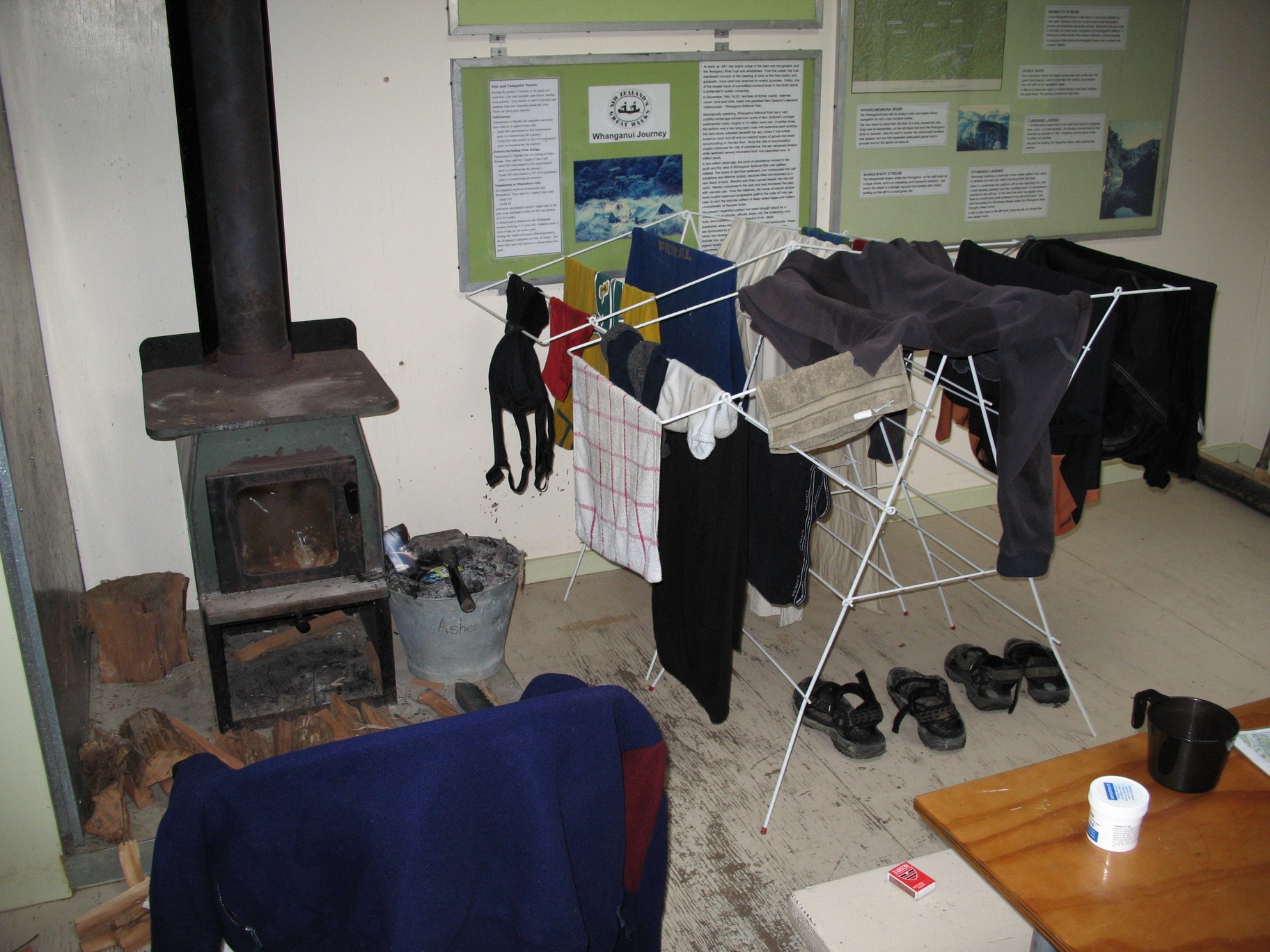
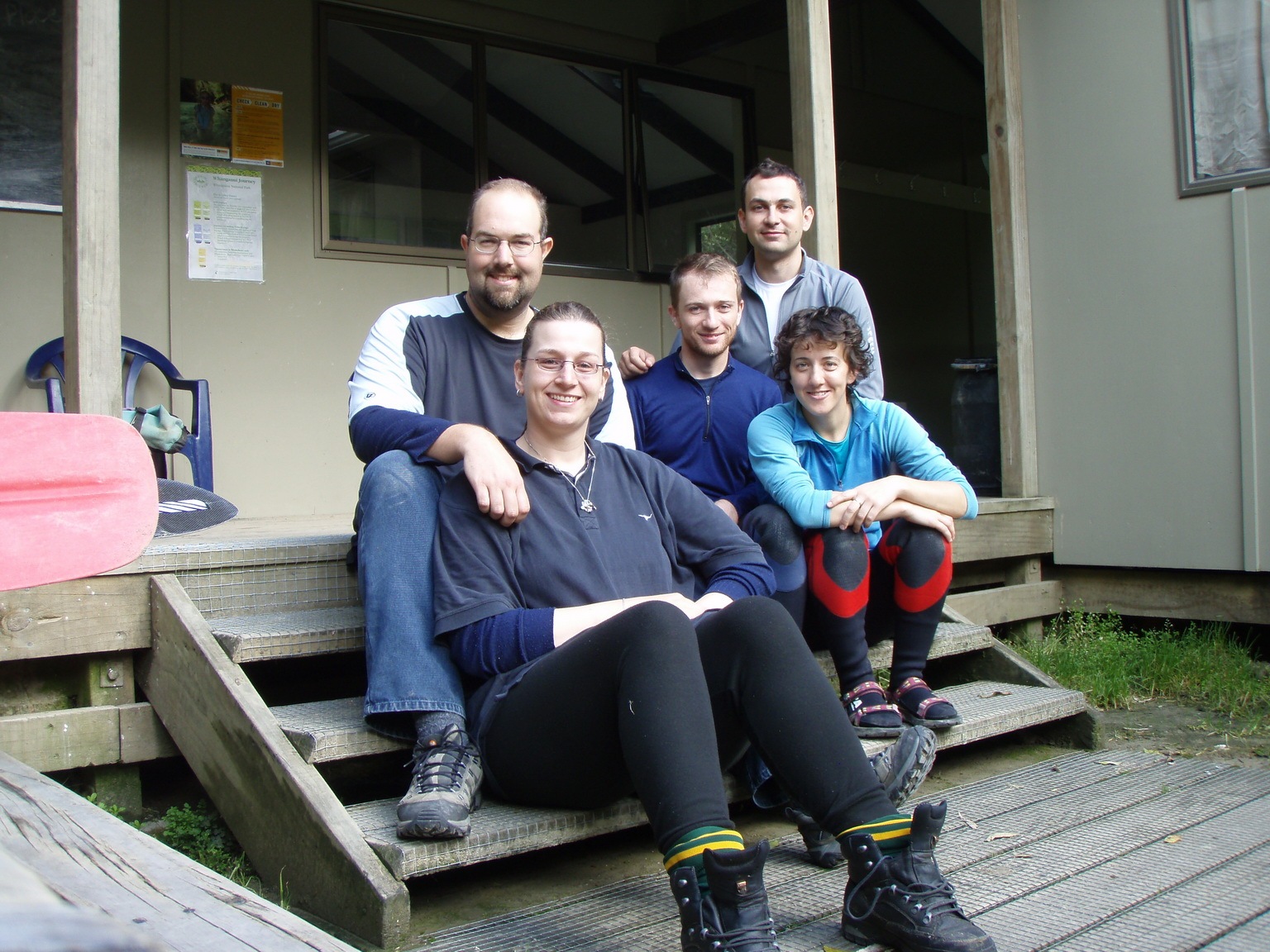
By late afternoon, most of our clothes had been flame dried. So we are much more warmly clothed than the previous night. The rest of the day is spent resting, chatting with the new arrivals, playing travel scrabble (wet but functional), reading magazines or keeping the fire going.
That night they shared a meal with us. Offering us cheese and fruit and nuts with straight rum. We offered some of our chocolate in exchange, and we all had a good time that night.
Since the fire had been going the whole day and the evening, the hut itself was very warm. I didn’t need a sleeping bag and was warm to just lie fully clothes on the mattress. However, during the night, we had to wake up and put more big logs on the fire to stop it from dying out completely. Fem was mostly awake through the night, and she had to nudge me to check the fire sometimes.
Day 3 – The Rescue
The two pig hunters had returned the previous night and were camping in swags outside in the camping section. They came into the hut in the morning and offered Fem and I some bacon with our breakfast. They assured us that they would immediately contact the canoe company as soon as they returned to their main base, which would have been at about 2 pm that afternoon. They apologised for not being able to take us with them, but we clearly understood the situation. We were just very grateful they could get the message out that day!
We said farewell to the Israelis at about 10:30 am. Then it was a slow process of waiting until we were rescued. Did the hunters get the message out in time? Will we be picked up today or tomorrow? I tell Fem that it will be too dark if they are not here by 5 pm, and we won’t get rescued until the following day.
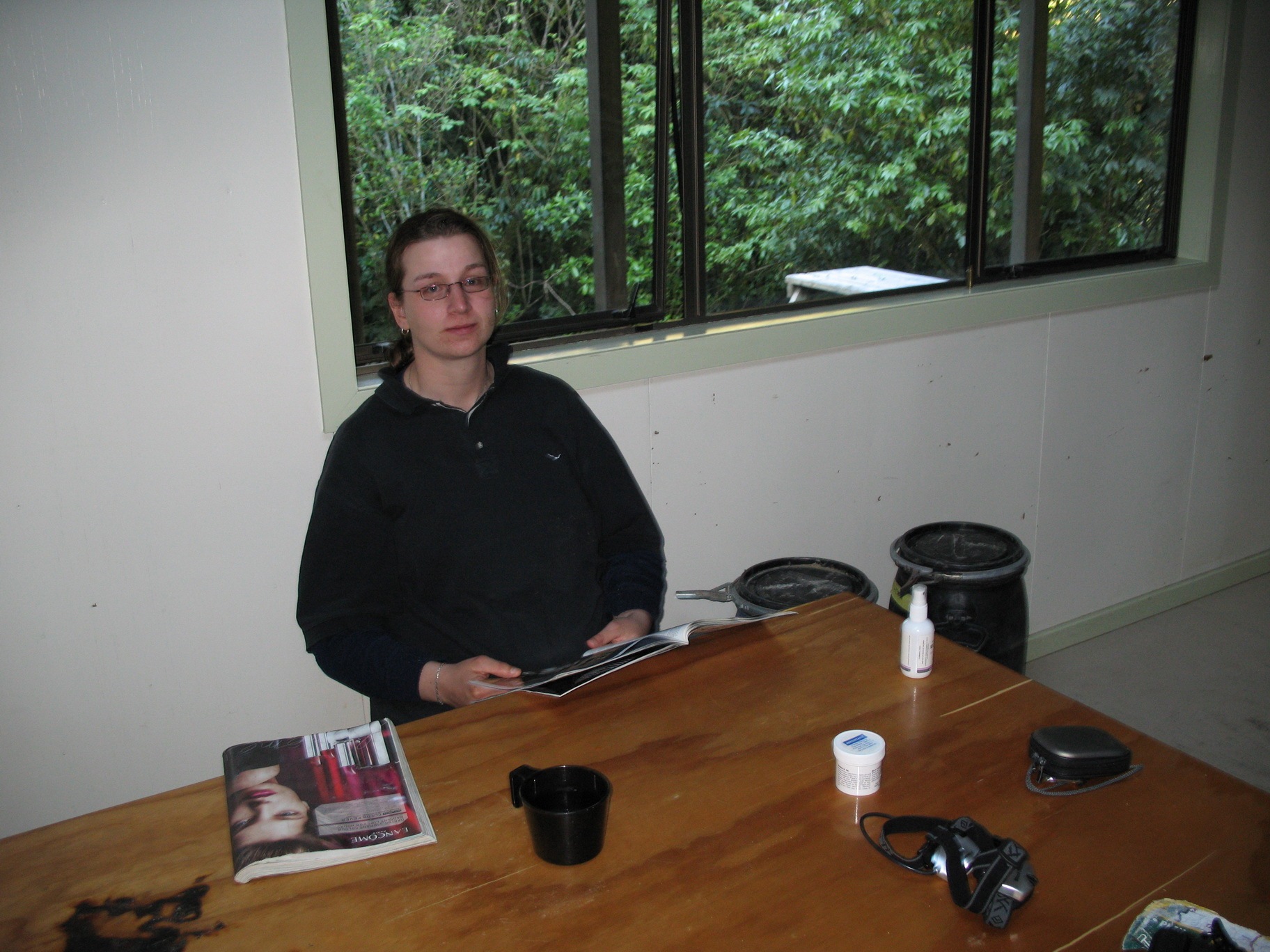
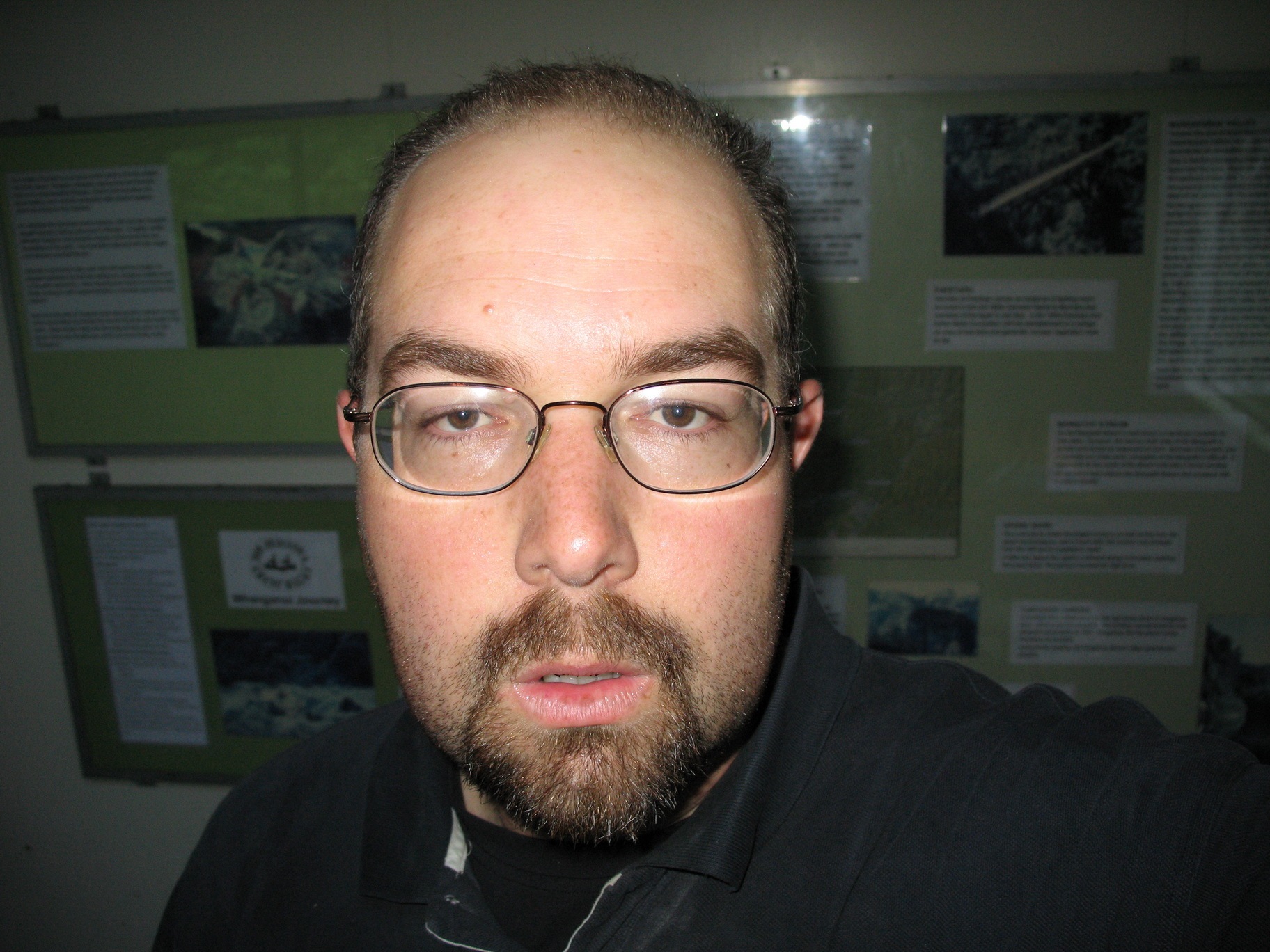
The above photos were taken at 4 pm to show us just waiting and waiting and waiting.
At 4:30 pm, after a painfully slow afternoon, Fem hears the roar of a jetboat engine, and we rush down to the landing area. There is a small jetboat waiting for us. He motioned us to get our stuff quickly. We run back to the hut, get our already packed barrels, and take them down.
“What about the canoe?” I yell out to the driver from the shoreline.
The driver who was out of audio range for me, just gave me the two-finger salute (meant for the canoe) and then smiled and waved his hand “bye-bye”.
We jumped in and off we went back the way we came. The river had dropped another 1.5 metres since the Sunday when we started. I could barely recognise it. We could not even spot where we had been able to get out of the water and sort out the canoe on the way down. The current had also dropped off dramatically. Fem was able to get some shots from the jetboat. Photo 3, with the jetboat’s wake clearly visible, shows where we toppled out.
The left side of photo 4 is a rough idea of the landing area where we first got the canoe out of the water. As you can see, it’s mainly a steep grassy cliff with a small section sticking out at the end.
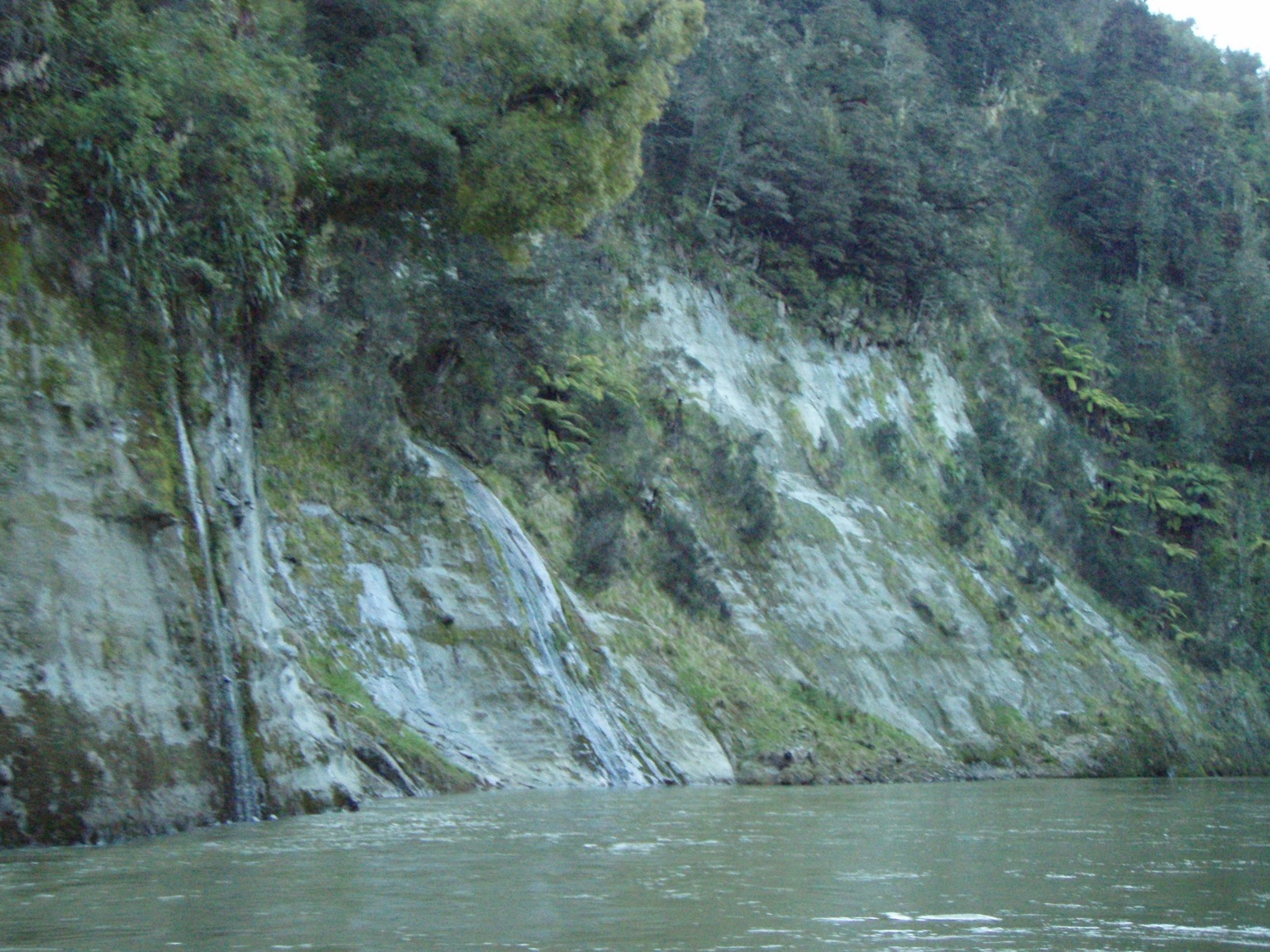
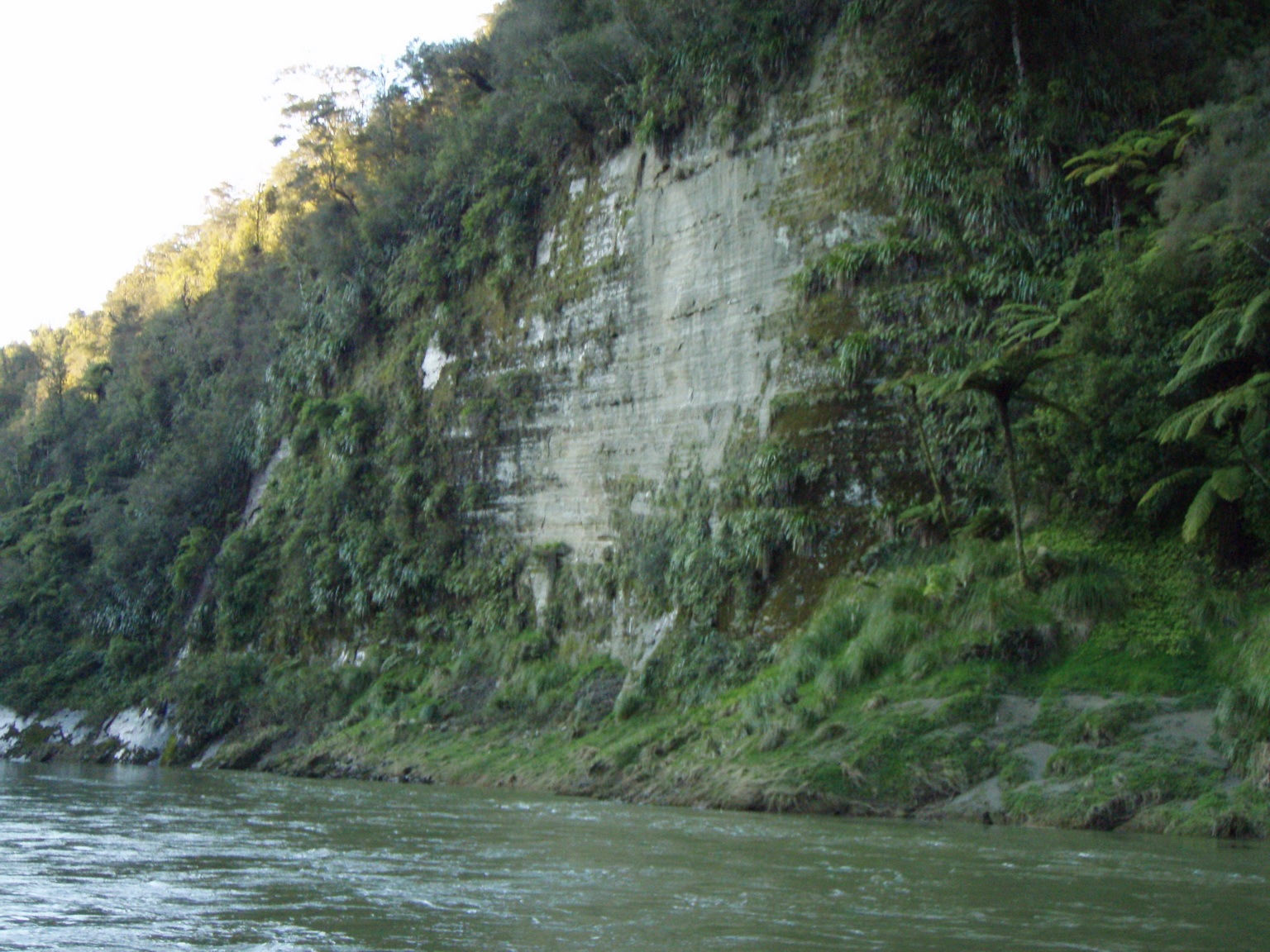
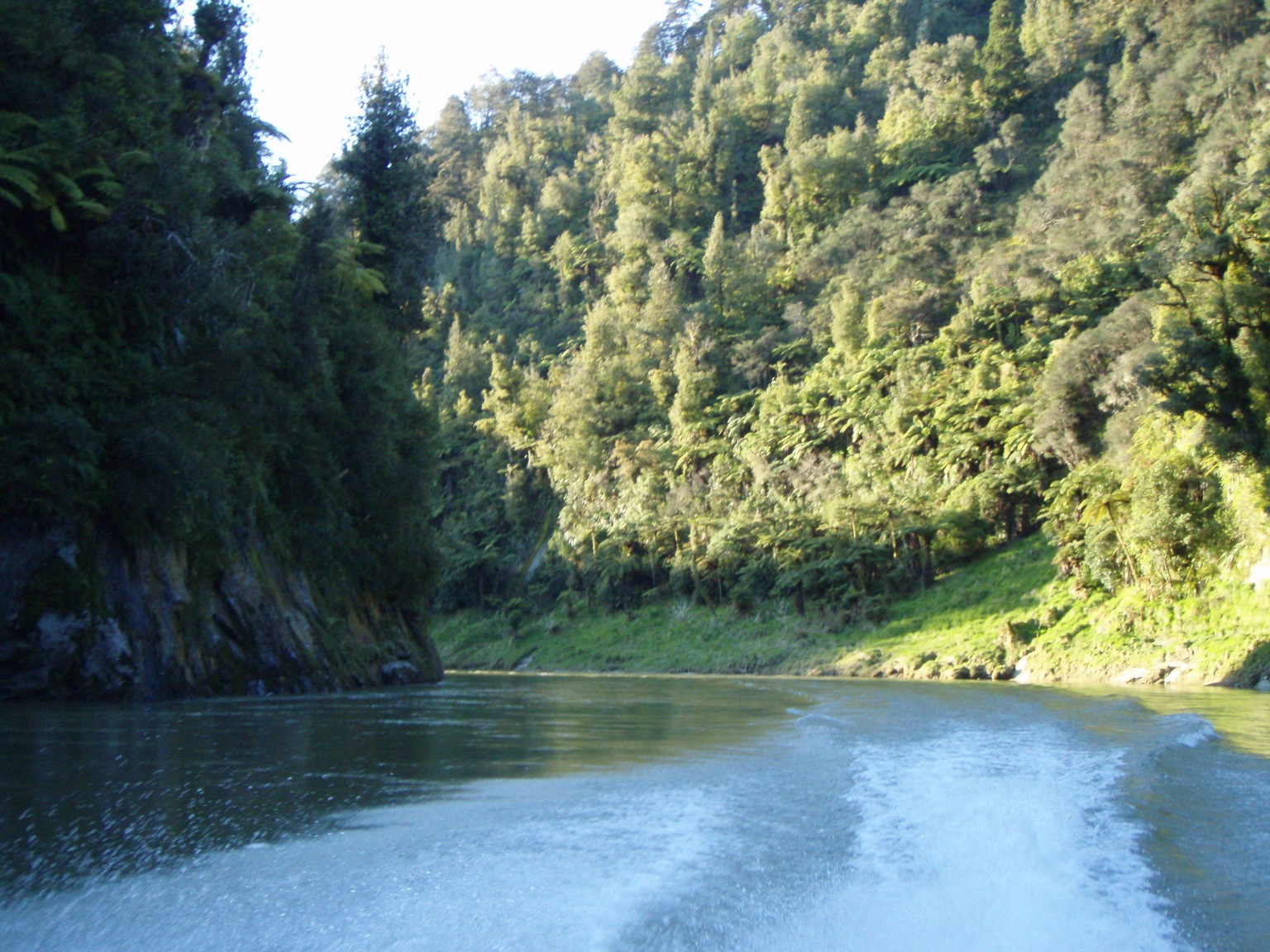
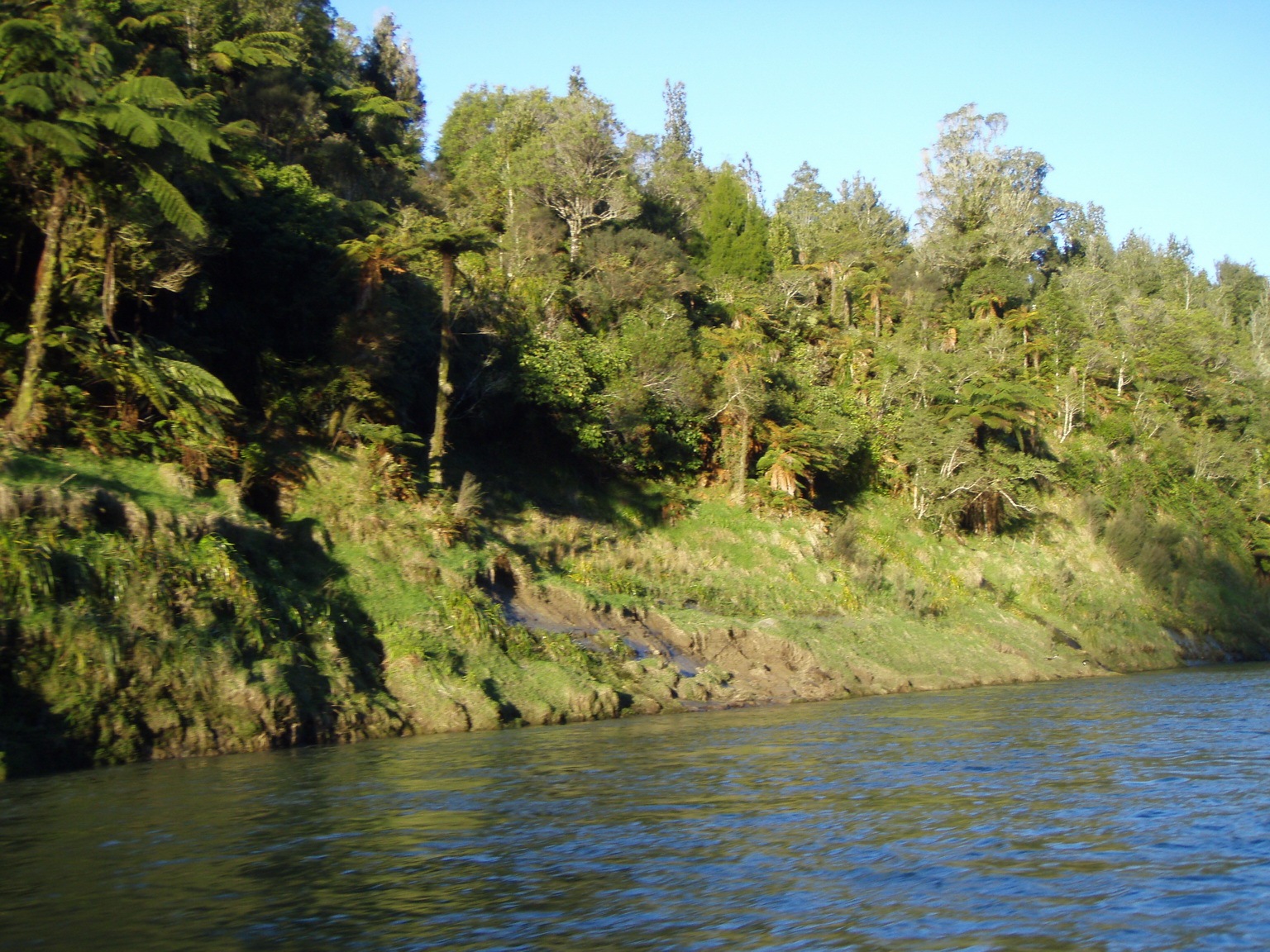
There were large sections of the river where there was no current at all. It was like significant sections were just a pond and some sections with some current. We were annoyed. This was how the river should have been for us.
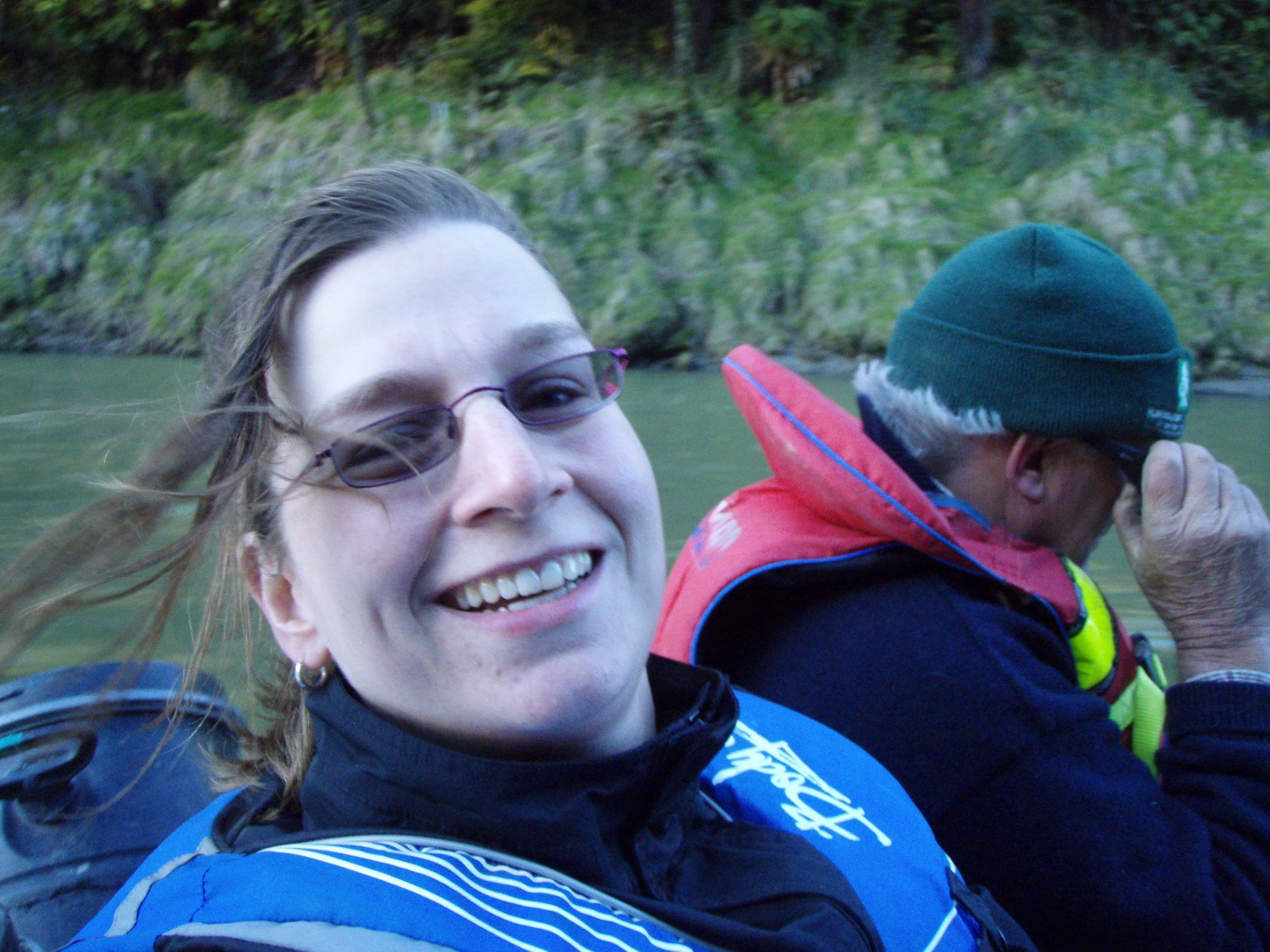
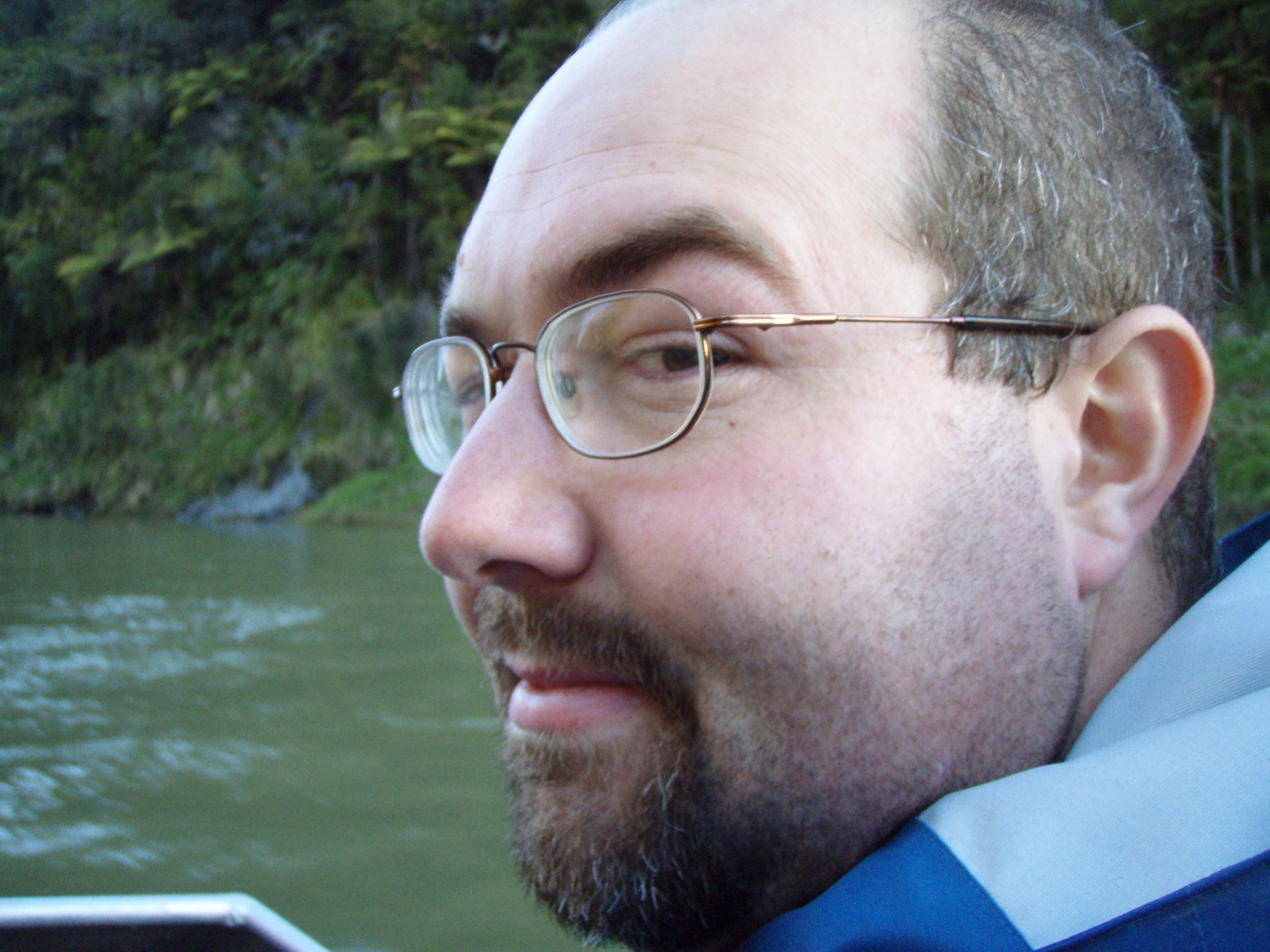
We got back to Whakahoro and got off the river. It was late in the evening, and the assistant’s car had a flat battery, so we could not get back to our car. They offered to put us up in a nearby lodge for the night to which we accepted. Everyone was so helpful and friendly to us. They were all shocked to hear our story. After having a tasty meal of deer heart, liver and kidneys from a hunter’s first kill, we settled in for a good night’s sleep.
Day 4 – Epilogue
After a good breakfast, the owner of the canoe company turned up and drove us back to our car. He was humble and apologetic and said, “Well, in hindsight, I probably should not have let you on the river”.
When we first arrived at the hut, we had initially been rather angry towards the owner and his abysmal decision to allow inexperienced canoeists on what ended up being a swollen river. But by the third day, we were grateful to have survived it and just wanted to move on.
We had not paid for the trip yet, and since he didn’t bring it up on the car ride back, I didn’t push it. Besides, we needed that money to get a new sleeping bag for me and a head torch for Fem.
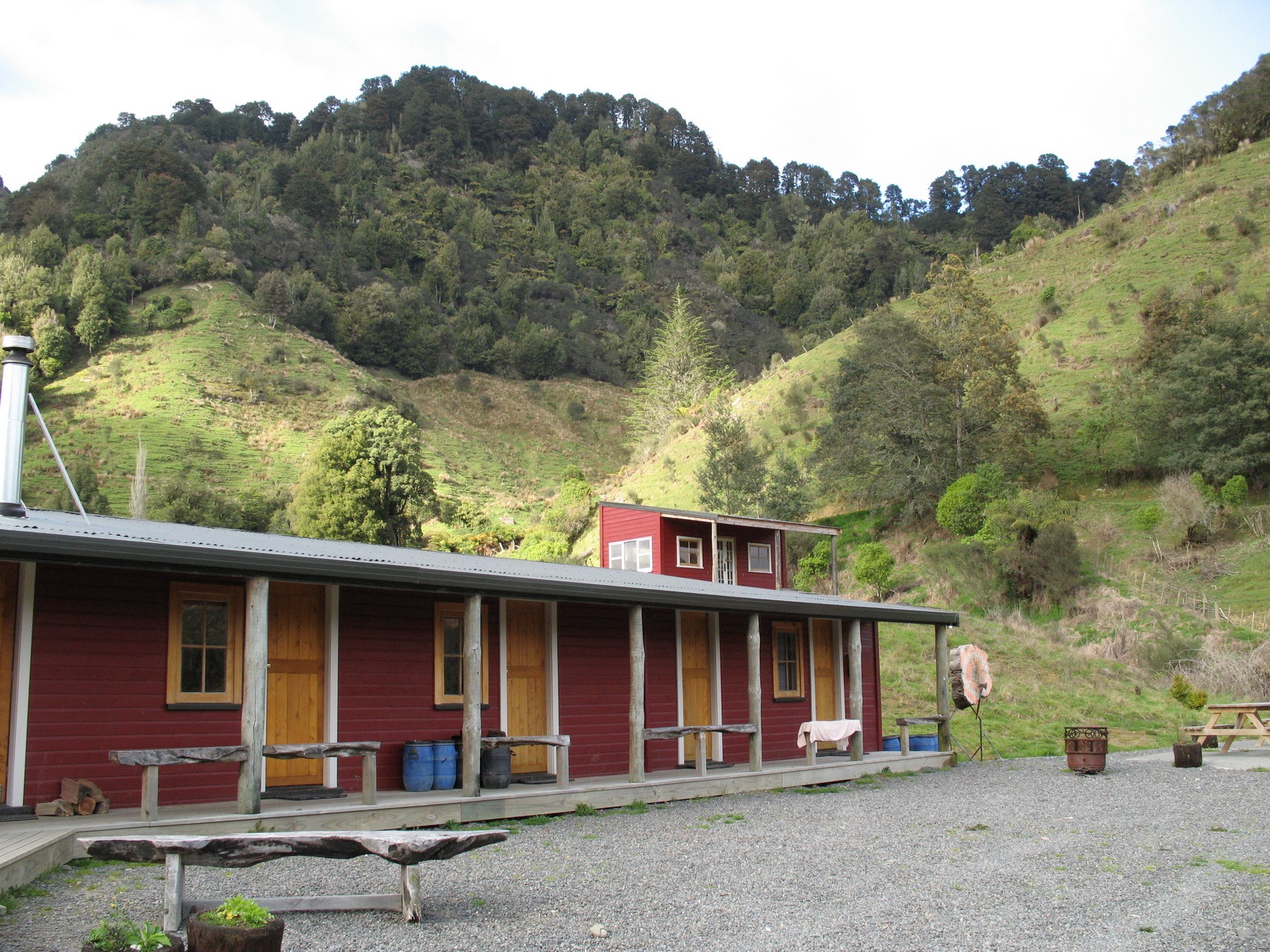
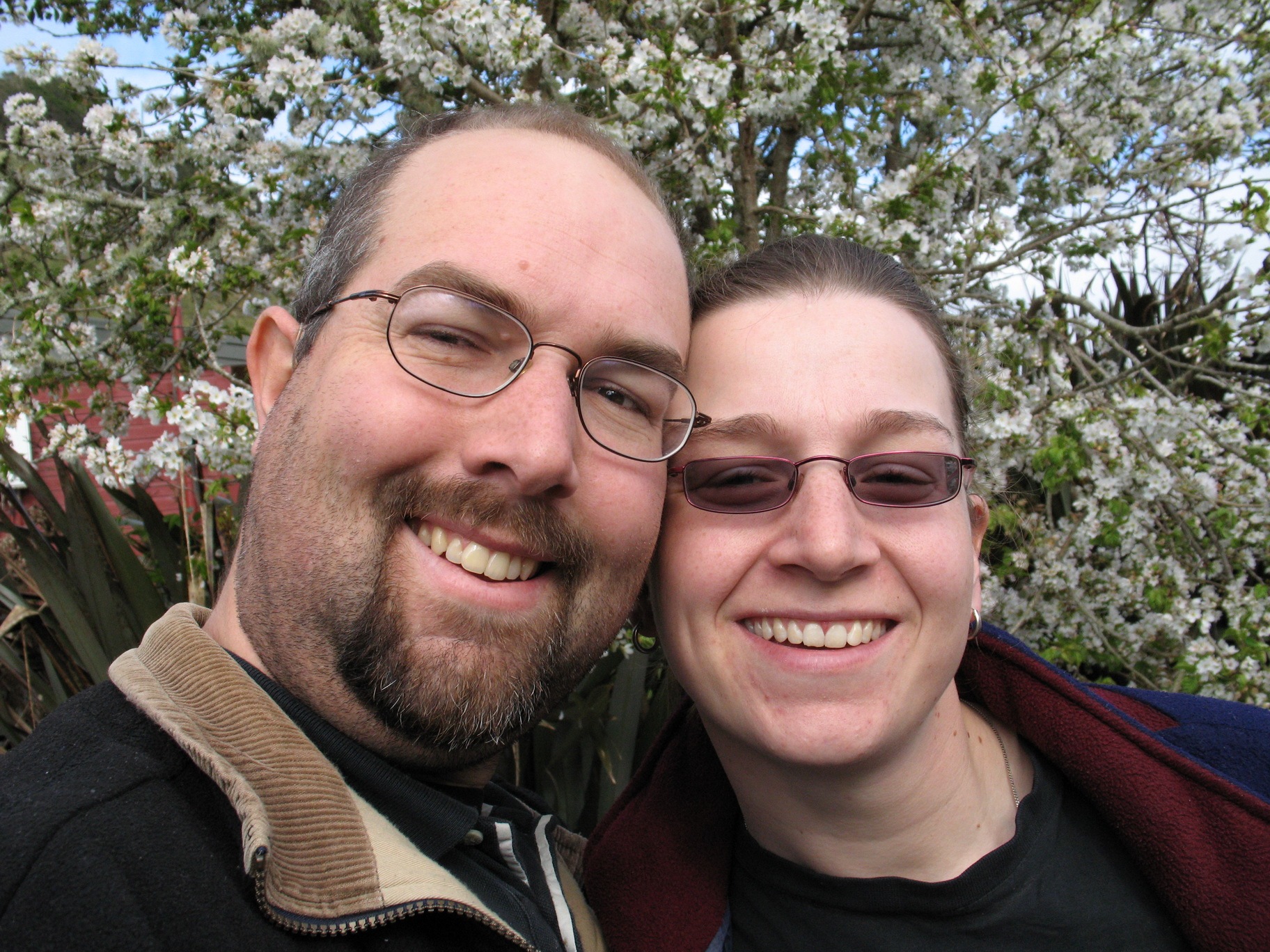
We got back to our car and then left. This concludes our Whanganui Canoe Trip. If you have any questions, please let me know.
- (Blog post co-edited by Femke)
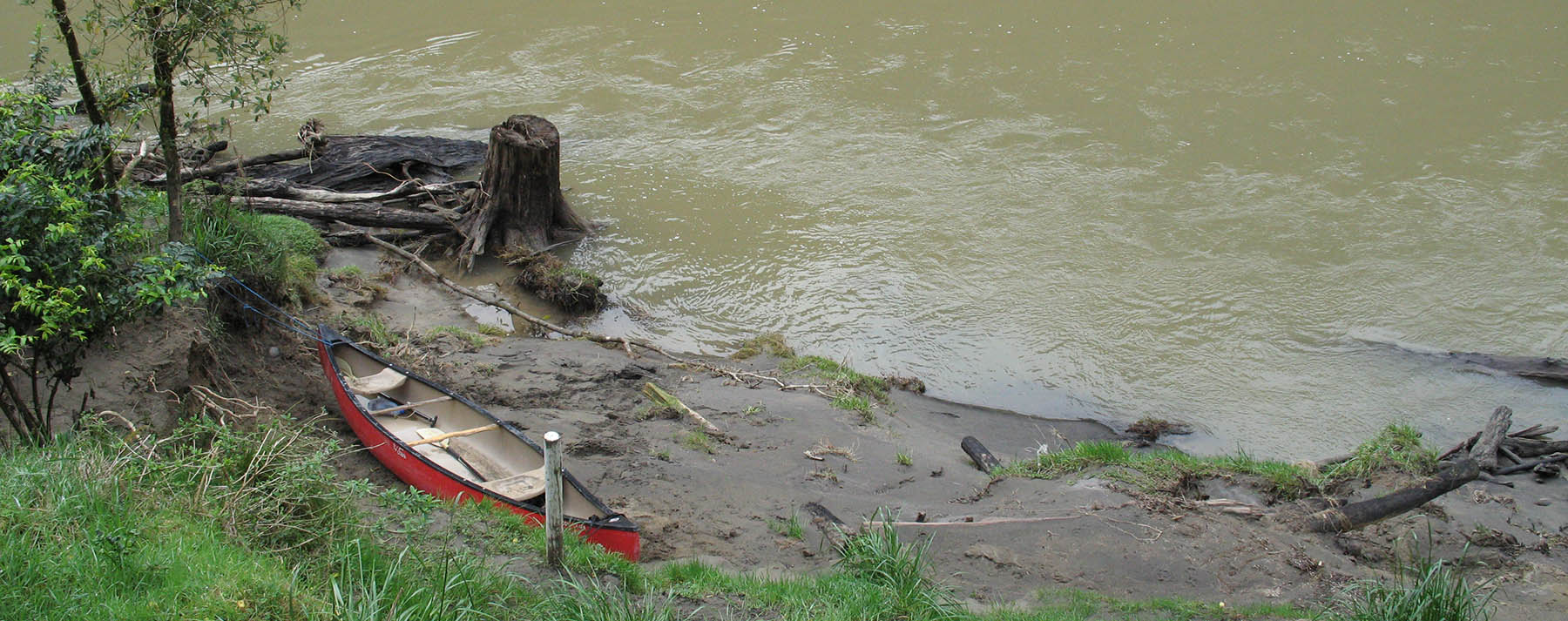

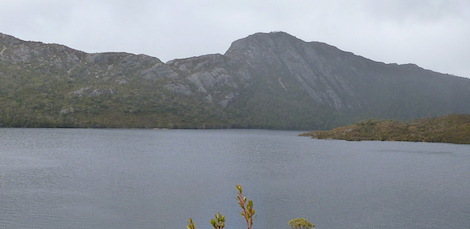
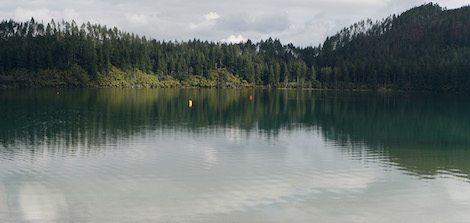
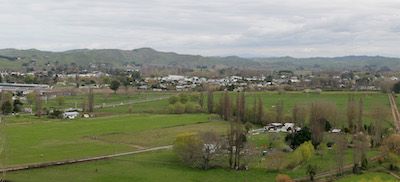
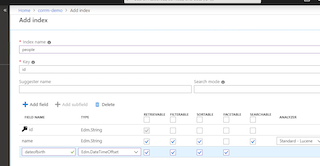
Leave a comment